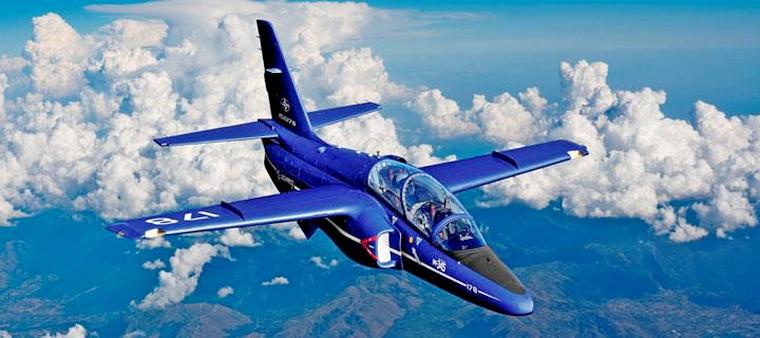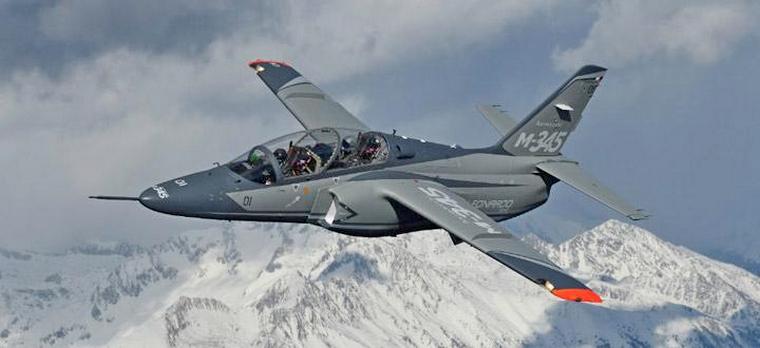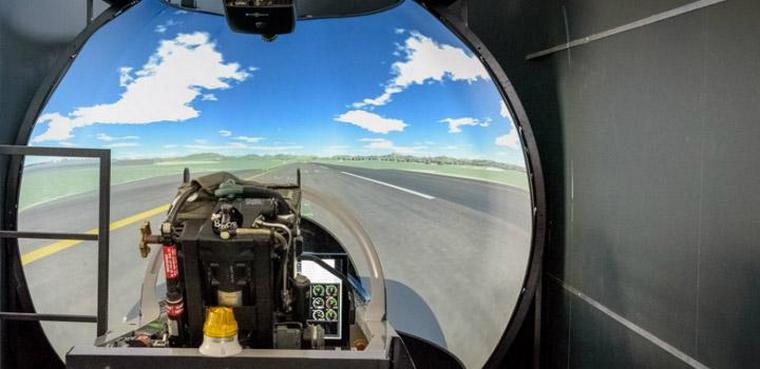












The Aermacchi M-345-Market ready
Thanks to over 60 years of experience in the design and production of aircraft and integrated training systems, Leonardo is now ready to introduce the Aermacchi M-345. A highly performing trainer aircraft designed to be simple, effective and reliable. In addition to featuring extremely low maintenance and support costs, the Aermacchi M-345 is the ideal aircraft to replace the current line of basic trainers around the world.
As one of the Air Forces that intends to acquire new generation combat aircraft in the coming years, the Canadian Air Force is assessing the integrated training system most suitable for its needs. The M-345 offers state-of-the-art avionics, flight simulators and other ground-based teaching aids, in addition to an integrated simulation system on board the aircraft, all of which are seamlessly integrated into a single LVC (Live, Virtual, Constructive) training environment.

The Aermacchi M-345 in the typical Canadian trainer aircraft livery.
The aircraft is fitted with simple and basic onboard systems that require a minimum amount of maintenance and are able to guarantee maximum safety and reliability. The result is a highly efficient trainer aircraft powered by a turbofan engine, but with purchase and life-cycle costs comparable to those of turboprop trainers and better performance compared to the latter.

The M-345 makes a turn over the Alps.
Student pilots and instructors sit on latest generation Martin Baker Mk.IT16D ejection seats inside a comfortable cockpit, fully equipped with sophisticated instrumentation including, among other things, three large LCD multifunction displays - very similar to the kind of equipment future pilots will find in front-line fighter aircraft.
The optimal balance between real flying experience and appropriate simulation brings costs down without compromising the quality of training, allowing the new M-345s to generate a greater number of training missions compared to the aircraft currently in service.

One of the simulators of the M-345's integrated training system.
As one of the Air Forces that intends to acquire new generation combat aircraft in the coming years, the Canadian Air Force is assessing the integrated training system most suitable for its needs. The M-345 offers state-of-the-art avionics, flight simulators and other ground-based teaching aids, in addition to an integrated simulation system on board the aircraft, all of which are seamlessly integrated into a single LVC (Live, Virtual, Constructive) training environment.

The Aermacchi M-345 in the typical Canadian trainer aircraft livery.
The aircraft is fitted with simple and basic onboard systems that require a minimum amount of maintenance and are able to guarantee maximum safety and reliability. The result is a highly efficient trainer aircraft powered by a turbofan engine, but with purchase and life-cycle costs comparable to those of turboprop trainers and better performance compared to the latter.

The M-345 makes a turn over the Alps.
Student pilots and instructors sit on latest generation Martin Baker Mk.IT16D ejection seats inside a comfortable cockpit, fully equipped with sophisticated instrumentation including, among other things, three large LCD multifunction displays - very similar to the kind of equipment future pilots will find in front-line fighter aircraft.
The optimal balance between real flying experience and appropriate simulation brings costs down without compromising the quality of training, allowing the new M-345s to generate a greater number of training missions compared to the aircraft currently in service.

One of the simulators of the M-345's integrated training system.
 |
 |
 Copyright © 2024 Pilot's Post PTY Ltd
The information, views and opinions by the authors contributing to Pilotís Post are not necessarily those of the editor or other writers at Pilotís Post.
Copyright © 2024 Pilot's Post PTY Ltd
The information, views and opinions by the authors contributing to Pilotís Post are not necessarily those of the editor or other writers at Pilotís Post.